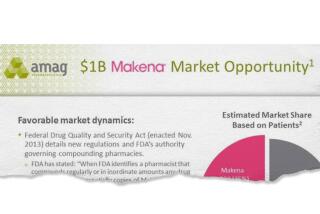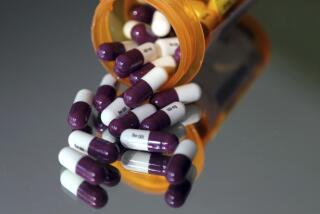FDA Approves Fourth Drug for Treatment of AIDS, HIV
- Share via
WASHINGTON — The Food and Drug Administration has approved a fourth drug, called Stavudine, or D4T, for the treatment of AIDS and HIV infection.
The drug, which will be marketed by Bristol-Myers Squibb Co. under the brand name Zerit, works in much the same way as other leading treatments for the disease--Ziduvudine (AZT), didanosine (ddI) and Zalcitabine (ddc). None of the drugs is a cure for AIDS, but may delay the onset of AIDS symptoms and extend survival time.
The drugs belong to the family of “nucleoside analogs,” which are believed to inhibit the ability of HIV to reproduce by “fooling” the virus into using the drug to build its DNA instead of the body’s own natural components. The drug also interferes with the production of enzymes that the virus needs in order to grow.
The FDA approved D4T for use in adults who no longer respond to, or are unable to tolerate, other nucleoside analogs. Current drug therapies have “significant limitations,” including toxicity and limited effectiveness over time, said David Feigal, director of the anti-viral drug division at the FDA’s Center for Drug Evaluation and Research.
Bristol-Myers Squibb said the drug will be shipped to wholesalers beginning in July. The company estimated the wholesale cost of the drug would come to $6.22 daily per patient--less than the cost of AZT.
In clinical trials of 359 AIDS patients whose immunity-boosting CD4 cells had dropped to a median level of 250 cells per cubic millimeter of blood, the drug was found to increase the count by 24 cells per cubic millimeter of blood. Patients taking AZT showed a decline of 22 cells over a 12-week treatment period. The normal number of CD4 cells in healthy adults is 1,000 per cubic millimeter of blood. Under the terms of accelerated approval, the company will continue to study the drug and its effects.
The chief side effect of the drug is pain, tingling and numbness in the hands and feet that affects between 15% and 21% of users.






